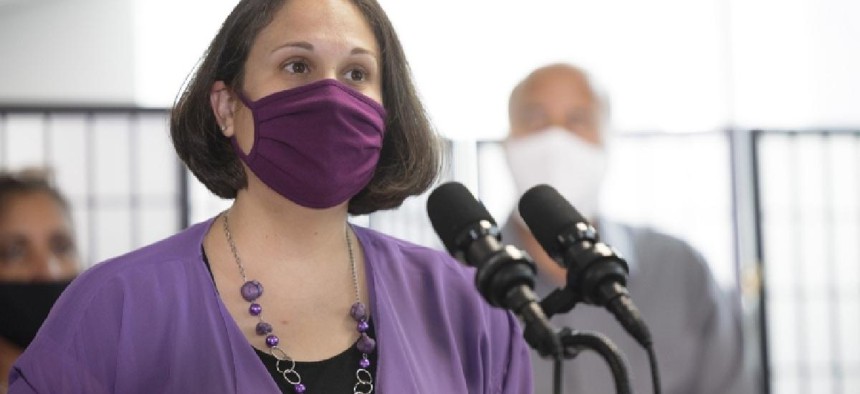Health Care
PA’s opioid stigma reduction campaign reaches 4M residents

Department of Drug and Alcohol Programs Secretary Jen Smith Commonwealth Media Services
By Cassie Miller
A year into a campaign to reduce the stigma associated with opioid use disorder (OUD), state officials, addiction researchers and community advocates are expressing joy at its success.
“For decades, stigma has cast a shadow over people battling substance use disorder and their families, and that must change,” Department of Drug and Alcohol Programs Secretary Jen Smith said earlier this month. “We are thrilled that within the first year of this campaign, attitudes have improved toward medication-assisted treatment, harm reduction tactics, and overall views of individuals struggling with this disease. We know there is still work to be done, and we are looking forward to continuing this critical work, with these great partners, and expanding the scope of the Life Unites Us campaign.”
RELATED ARTICLES
In the 12 months since Life Unites Us’ launch, the campaign has reached nearly 4 million Pennsylvanians, according to DDAP.
With testimonials from more than 200 individuals in recovery and family members, the campaign hosted 12 webinars related to stigma reduction. The webinars boasted more than 1,200 attendees.
The statewide campaign is funded by $1.9 million federal grant funding, according to the department.
Findings
80 … the percentage of respondents who viewed the campaign agreed that the opioid epidemic is a serious problem in their community; compared to 61.9% of respondents who did not view the campaign.
39.2 … the percentage of respondents who viewed the campaign agreed that buprenorphine, medication-assisted treatment for OUD, is effective; compared to 25.8% of respondents who did not view the campaign.
35 … of respondents who viewed the campaign agreed that their local government has strong policies to support people with OUD; compared to 17.2% of respondents who did not view the campaign.
60.8 … the percentage of respondents who viewed the campaign agreed that their community has programs to help people with OUD; compared to 38.2% of respondents who did not view the campaign.
In the future
With a successful first year under its belt, DDAP confirmed that the campaign will be expanded in its second year to address the stigma around polysubstance and stimulant use, which has increased in Pennsylvania and nationally in recent years.
Pennsylvania saw a 5% increase in treatment admissions for stimulant use from 2018 to 2020. The department said that stimulants are “the most common secondary substance of those admitted to substance abuse treatment programs.”
“Since 2018, approximately one out of four callers to Pennsylvania’s Get Help Now Hotline are seeking treatment for stimulant use,” a statement from the department said.
“What we found was significant positive outcomes after just one year of the campaign, and that we’re moving the needle in the right direction to reduce substance use disorder stigma. We know that positive changes in knowledge, attitudes, and behaviors to reduce stigma does not happen overnight, by chance, or through the work of siloed stakeholders. As the campaign progresses, our entire team looks forward to continuing this important life-saving work, engaging with additional stakeholders across the state to reduce stigma, providing needed resources, and ultimately saving lives,” Weston Kensinger, director of the Douglas W. Pollock Center for Addiction Outreach and Research, said.
Cassie Miller is a reporter for the Pennsylvania Capital-Star, where this story first appeared.
